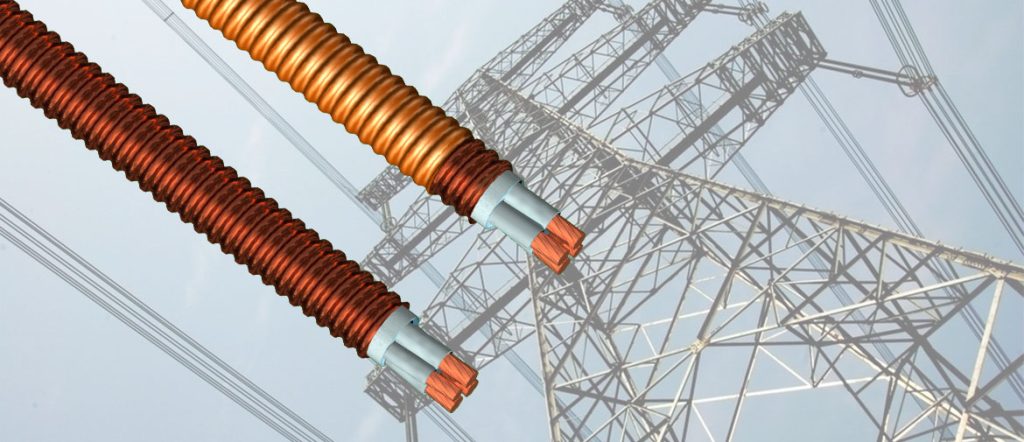Introduction
In the world of audio applications, the quality of sound transmission is paramount. Whether it's in recording studios, live performances, or home entertainment systems, the fidelity of the audio signal can make or break the overall experience. One crucial component that plays a significant role in preserving the integrity of the audio signal is the shielded cable. Shielded cables are designed to minimize electromagnetic interference (EMI) and radio frequency interference (RFI), ensuring that the audio signal remains clean and free from distortions. In this article, we will explore the importance of shielded cables in audio applications, how they work, and the various types available in the market.
What is Shielded Cable?
Shielded cable, also known as screened cable, is a type of electrical cable that contains one or more insulated conductors enclosed by a conductive layer. This conductive layer, known as the shield, serves to protect the inner conductors from external electromagnetic interference (EMI) and radio frequency interference (RFI). Shielded cables are commonly used in audio applications where the integrity of the signal is crucial, such as microphone cables, instrument cables, and speaker cables.

How Does Shielded Cable Work?
Shielded cables work by providing a barrier between the inner conductors carrying the audio signal and external sources of interference. The shield, which is typically made of a conductive material such as copper or aluminum, acts as a Faraday cage, absorbing and redirecting electromagnetic and radio frequency interference away from the inner conductors. This helps to maintain the integrity of the audio signal and prevents distortions or noise from affecting the sound quality.
Types of Shielded Cables for Audio Applications
There are several types of shielded cables commonly used in audio applications, each with its unique characteristics and advantages. Some of the most popular types include:
1. Braided Shield Cable: Braided shield cables consist of a woven mesh of fine conductive material, such as copper or aluminum, that surrounds the inner conductors. The braided shield provides excellent flexibility and durability, making it ideal for applications where the cable may be exposed to frequent movement or bending. Braided shield cables are commonly used in microphone cables and instrument cables.
2. Foil Shield Cable: Foil shield cables feature a thin layer of conductive foil, such as aluminum, wrapped around the inner conductors. Foil shields provide superior EMI and RFI protection and are often used in high-frequency applications where precise signal transmission is essential. Foil shield cables are commonly found in digital audio cables and high-end speaker cables.
3. Combination Shield Cable: Combination shield cables combine both braided and foil shields to provide enhanced protection against a wide range of interference sources. The combination of braided and foil shields offers the best of both worlds, combining the flexibility of braided shields with the superior shielding capabilities of foil shields. Combination shield cables are often used in professional audio equipment and critical listening environments.
Benefits of Using Shielded Cables in Audio Applications
The use of shielded cables in audio applications offers several key benefits, including:
1. Reduced Interference: Shielded cables help to minimize electromagnetic interference (EMI) and radio frequency interference (RFI), ensuring that the audio signal remains clean and free from distortions. This is especially important in high-fidelity audio applications where even minor interference can impact sound quality.
2. Improved Signal Integrity: By protecting the inner conductors from external interference, shielded cables help to preserve the integrity of the audio signal, ensuring that it reaches its destination without any loss of quality. This is crucial in professional audio settings where accuracy and clarity are paramount.
3. Enhanced Durability: Shielded cables are designed to withstand the rigors of daily use, offering excellent resistance to physical damage, abrasion, and environmental factors. This makes them ideal for use in live performance settings, recording studios, and other demanding audio environments.
4. Versatility: Shielded cables are available in a variety of configurations, including different shield types, conductor materials, and connector options. https://www.jiangyuancables.com/pvc-insulated-sheathed-control-cable/ allows users to choose the right cable for their specific audio application, ensuring optimal performance and compatibility.
Best Practices for Using Shielded Cables in Audio Applications
To maximize the benefits of shielded cables in audio applications, it is essential to follow best practices for installation and maintenance. Some tips to consider include:
1. Proper Cable Routing: When installing shielded cables, it is important to route them away from sources of interference, such as power cables, fluorescent lights, and electronic devices. This helps to minimize the risk of EMI and RFI affecting the audio signal.
2. Grounding: Ensure that the shield of the cable is properly grounded at both ends to provide an effective path for interference to dissipate. Improper grounding can lead to ground loops and introduce unwanted noise into the audio signal.
3. Regular Inspection: Periodically inspect shielded cables for signs of wear, damage, or corrosion. Replace any cables that show visible signs of deterioration to prevent signal degradation and ensure reliable performance.
4. Use High-Quality Connectors: Invest in high-quality connectors that provide a secure and reliable connection between the cable and audio equipment. Poor-quality connectors can introduce signal loss and affect sound quality.
Conclusion
Shielded cables play a critical role in ensuring high-quality sound transmission in audio applications. By providing protection against electromagnetic interference and radio frequency interference, shielded cables help to maintain the integrity of the audio signal, resulting in clean and distortion-free sound reproduction. When selecting shielded cables for your audio setup, consider factors such as cable type, shielding material, and connector quality to ensure optimal performance and reliability. By following best practices for installation and maintenance, you can maximize the benefits of shielded cables and enjoy a superior audio experience in any setting.
